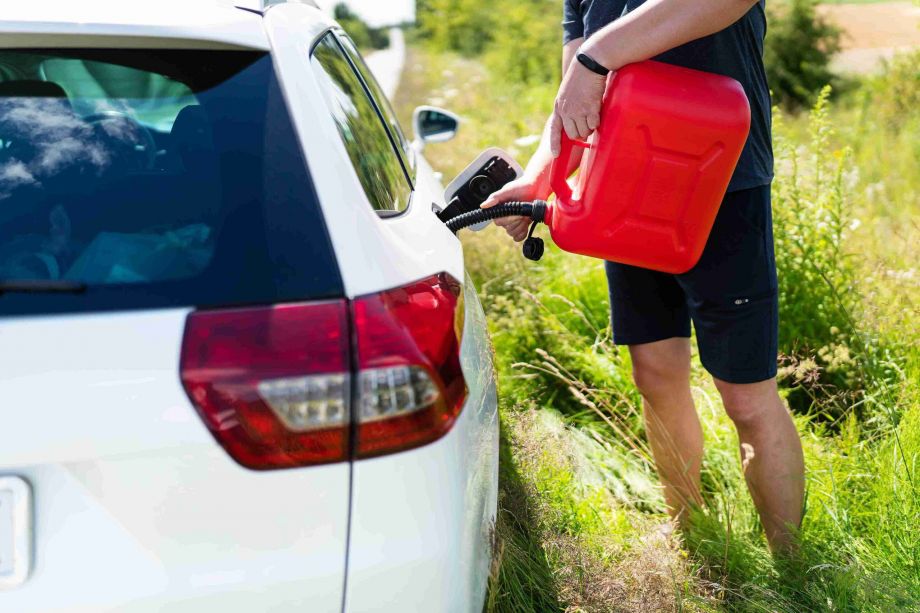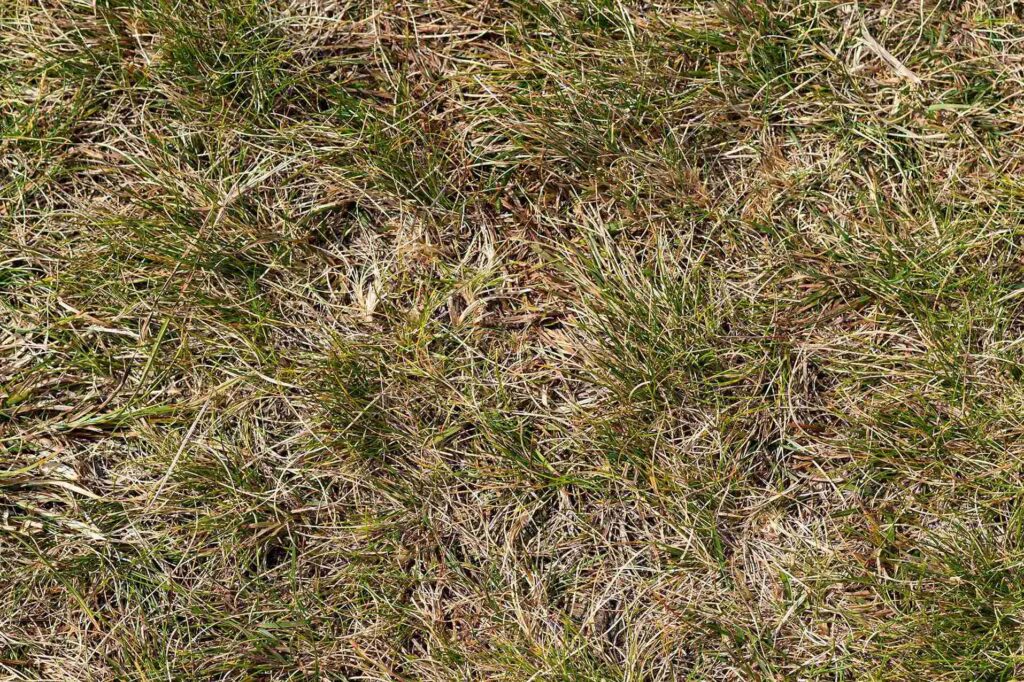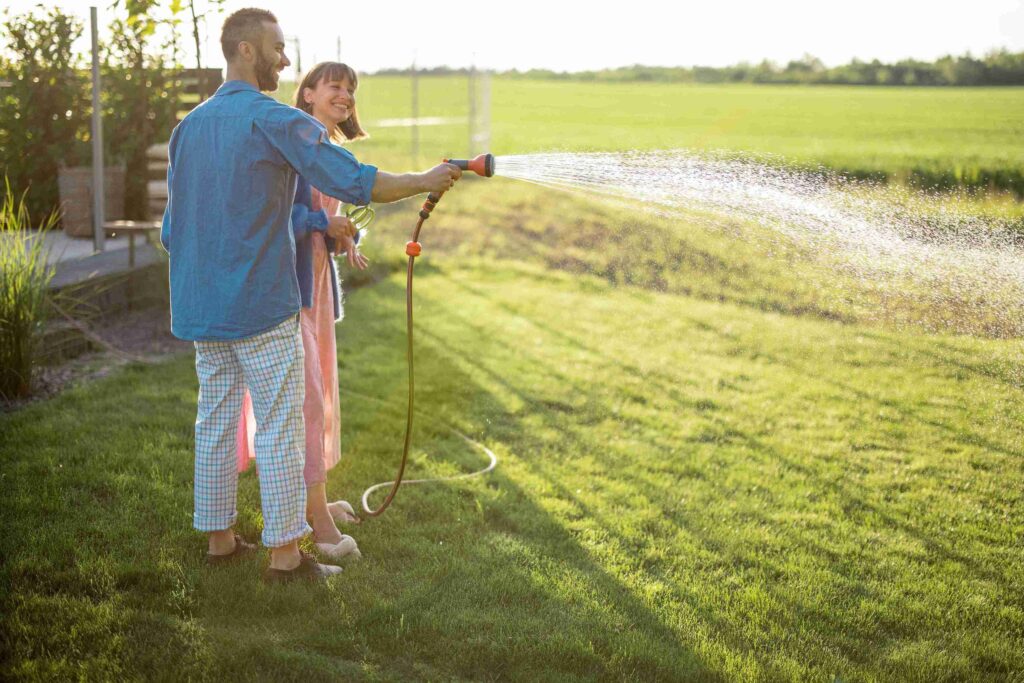
Will Gas Kill Grass? (Yes – Explained)
We’ve all had a moment where we’re messing around with our lawnmower or maybe topping off the weed eater, and whoops – gas spills on grass.
Now you’re staring at the spot, wondering, “Is this bad? Did I just kill my grass?”
Unfortunately, the answer is yes, gas can kill grass. It can burn the blades, seep into the soil, and leave behind some ugly dead patches.
In this post, I’ll explain how gas kills grass, and what can you do to minimize the impact.
I’ll also show you how to recover if the gas does end up killing your grass.
Can Gas Kill Grass?
Yes, gas can kill grass, and it doesn’t take much to do some serious damage.
Gasoline is full of harsh chemicals like hydrocarbons and additives that are toxic to plant life. When spilled on grass, it immediately begins to break down cell structures and causes the blades to dry out and turn yellow or brown.
But the real danger is what happens beneath the surface.
Also Read: Will Lime Kill New Grass Seed?
If the gas seeps into the soil, it creates a toxic environment that suffocates roots, and prevents them from taking in water and nutrients.
Plus, it can also break down beneficial microorganisms in the soil that help your grass grow. Without those microbes, the soil becomes less fertile.
The longer gas sits in the ground, the harder it is for grass to recover.

If it’s a small spill the grass might struggle but eventually recover, but a bigger one can leave behind dead patches that won’t grow back unless you clean up the contaminated soil and reseed or re-sod the area.
What To Do If You Spill Gas On Grass
If you do end up spilling gas on grass, you need to act quickly to minimize the damage. Here are some steps to help you get your lawn back on track:
#1 Absorb The Spill
First things first, you need to absorb the gasoline.
The longer it sits there, the more it can seep into the soil and do damage.
You can use a variety of materials to soak up the gas, such as cat litter, sand, or even sawdust.
Spread a generous amount over the spill, and let it sit for a while. It’ll help soak up the liquid, and make it easier to clean up.
#2 Dispose Properly
Once you’ve absorbed the gasoline, you can’t just toss the materials in your regular trash.
Gasoline-soaked items are considered hazardous waste, so they need to be disposed of properly. Check with your local waste management facility for the right way to dispose of it in your area.
Some places might even have special disposal sites for hazardous materials.
Also Read: Can I Put River Rocks Around Trees?
#3 Water The Area
After you’ve cleaned up the spill, give the area a good watering.
You want to dilute any remaining gasoline in the soil and help wash it away.
Be sure to water deeply, so the gasoline doesn’t just move around on the surface—it needs to go down into the ground and away from the roots.

Keep an eye on the area for a few days to make sure the grass starts bouncing back.
#4 Allow Time To Air Out
Gasoline has a strong odor, and that smell can stick around for a while. Letting the area air out is a good idea, so give it some time.
If you’re able to, avoid walking on the grass until it starts to recover.
Just let the soil breathe, and give your lawn time to work through the fumes.
How To Repair Lawn Damage From Gasoline
If the damage is already done and you’ve got dead spots on your lawn, don’t stress. You can still fix it! It’s going to take a little bit of effort, but it’s definitely doable.
Assess The Damage
First, take a good look at the area.
Some spots might just be a little discolored, and other spots might be completely dead.
If it’s a small area, you might not need to do much at all. But if the damage is more widespread, you’ll have to take a few extra steps.
Remove Dead Grass
Once you’ve figured out where the damage is, you can start cleaning things up.
Remove any dead grass from the area. You can pull it up by hand or use a rake to get rid of it.
If the gas spill was large, the grass might be beyond repair, so you’ll need to clear it away before you do anything else.
Also Read: Will Cayenne Pepper Kill Grass?
Aerate The Soil
Next, it’s time to aerate the soil. This helps loosen up compacted soil and gives the new grass seeds a better chance to take root.
You can use a manual aerator or rent a power aerator if you have a larger lawn.
Aerating is especially important if gasoline has really affected the soil because it helps reintroduce oxygen into the ground, which the grass desperately needs.
Reseed The Area
Now comes the fun part – reseeding!
You’ll want to choose a grass seed that matches your lawn’s existing grass. If you don’t know exactly what kind of grass you have, go with a general-purpose seed for your region.
Spread the seeds evenly over the area, making sure they’re in good contact with the soil.
If you’ve a larger area, you might want to rent a broadcast spreader to make the job easier.
Water Properly And Fertilize
Once your seeds are down, water the area well.
Keep the soil moist, but not soaked. Too much water can drown the seeds, and too little can cause them to dry out. It’s a balance.
After a few weeks, once you start seeing some green growth, you can begin to cut back on the watering.
Fertilizing can also help speed up recovery. Use a fertilizer that’s appropriate for your type of grass. Look for one with a good balance of nitrogen, phosphorus, and potassium – this will give your grass the nutrients it needs to grow strong and healthy.
Don’t overdo it, though. Too much fertilizer can actually harm the grass.
Wrapping Up
Spilling gasoline on your lawn isn’t the end of the world, but it can cause some serious damage.
Gasoline can kill grass by messing with the soil, harming the grass roots, and disrupting the natural growth process.
If you do spill gas, just follow the steps to clean it up, and you’ll minimize the impact. However, if the damage is done and you need to repair your lawn, it’ll take a little patience, but you can definitely bring it back to life.
With some care and attention, your lawn will bounce back in no time.
In the end, accidents happen. The best thing you can do is stay calm, take action, and give your lawn the TLC it needs to recover.








